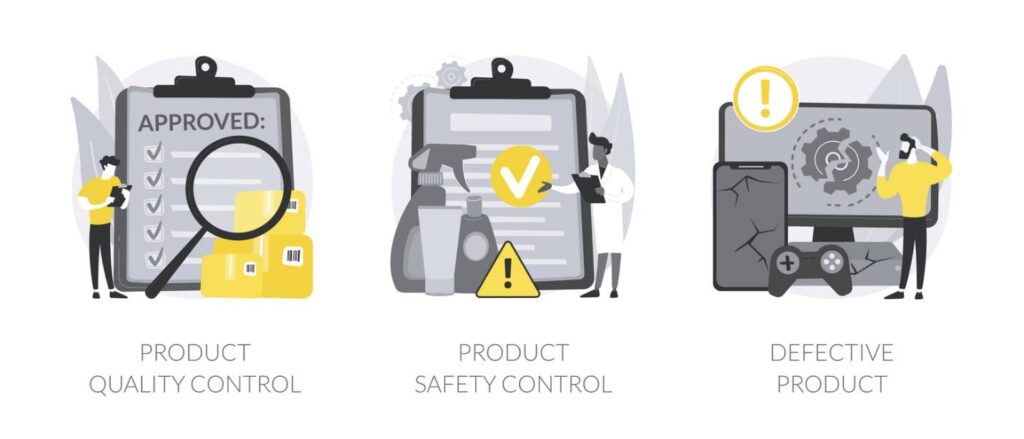A tort is an act or omission that gives rise to injury or harm to another and amounts to a civil wrong for which courts impose liability. In the context of torts, “injury” describes the invasion of any legal right, whereas “harm” describes a loss or detriment in fact that an individual suffers.
-Cornell Law School
Product liability is the law, or tort, to which manufacturers or sellers of defective products are held liable. These defects can range from poor engineering in design to errors in the manufacturing process.
There are three basic types of product defects, depending on where and when the defect occurred in the manufacturing process:
- Defective Design
- Defective Manufacturing
- Defective Marketing/Labeling
Defective products can include a wide range of consumer goods, as well. From medication to automobiles, anything man-made can have a defect.

High-Risk Consumer Goods with Defects
There are certain products that run a higher risk of being made with defects simply because of their intended use. For example, an imperfect notepad is less likely to cause harm than a defective baby stroller. Some items simply don’t carry the same risk factors as others.
Defective Drugs
Prescription and over-the-counter drugs run a very high risk of harm if designed or manufactured improperly. Defects, such as side effects, can have a long-term impact on consumers, causing serious health issues and fatalities.
Defective Medical Devices
Any type of medical device or implant that can be attached to or inserted into the body can cause serious harm if it is defective. Products meant to regulate the heart or provide support to muscle or soft tissue can often be painful or cause infection.
Automobile Defects
Perfectly designed and manufactured vehicles are dangerous to drive simply because of the potential harm caused by operator negligence. Once you add a product defect to the mix, lives can be lost. If a driver loses control of the vehicle or a necessary part detaches while driving, all persons in the vehicle are at risk, as well as any nearby drivers or pedestrians.
Other Defective Products
Many other products may also be medium to high risk because of the way they are used. Baby toys, carriers, and other devices can potentially injure or kill an infant. Items that are not properly labeled as choking hazards can cause serious harm, just as a faulty baby swing can cause a child to fall.
Safety devices like helmets, which are meant to protect and save lives, can have the opposite effect if they are defective. Electronic devices, machinery, and tools are risky, as well, due to their conductive traits, weight, and power.
If you have experienced harm of any kind due to a defect in a product, we highly recommend contacting a product liability lawyer. A free consultation is all it takes to find out if you have a case. By speaking up, your voice may affect the change necessary to protect someone else, or even save a life.

